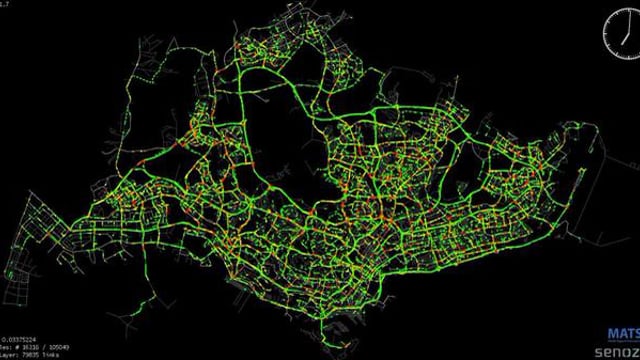MATSim Singapore
The Future Cities Laboratory (FCL) is a transdisciplinary research centre focused on urban sustainability and is located in Singapore. The FCL is building a MATSim complete model for Singapore.
Videos
MATSim Singapore in operation
This video highlights key features of MATSim Singapore: the large-scale agent-based transport simulation is based on a synthetic, statistically representative population of Singapore, activity-based and building -fine travel demand modelling and interaction between public transport and private vehicles.

Big Data transport simulation with MATSim
The development of this prototype MATSim application leverages on the richness of already existing data sources to more simulate public transport systems of entire cities at an unprecedented level of details and predict the impact of future scenarios.

Embracing Walkability
Everybody walks. To access public transport, to go shopping around the corner or simply for a leisurely stroll, walking is an indispensable mode of transport in…

Updated Multi-agent Transport Simulation (MATSim) of Singapore
This video shows the simulation output of an updated MATSim (matsim.org) model for Singapore. The initial demand modeling is based on information shared by Land…

What makes a world-class rail system?
In the tenth episode of VoicesTODAY, hosts Nicholas Fang and Hazlina Halim ask the question: What makes a world-class rail system? What more must be done to improve rail services? Are the short- and long-term measures being taken, like the free travel trial and network upgrading, adequate? Do we expect too much of our MRT system or are the grouses justified? How can commuters play a part?

First Multi-agent Transport Simulation (MATSim) of Singapore
This video shows the simulation output of the first MATSim (matsim.org) model for Singapore. The initial demand modeling is based on information shared by Land Transport Authority (LTA). The simulation covers both public and private transport and their interactions. This video is purely a product of research and has no immediate relevance to policy and planning. Pieter Fourie is responsible for the demand modeling, Sergio Ordóñez took care of the network modeling, Michael van Eggermond collected the facilities data and Artem Chakirov tested the public transport simulation, all coordinated by Alex Erath. We acknowledge LTA for providing the underlying data and Senozon (senozon.com) for the visualising software.
